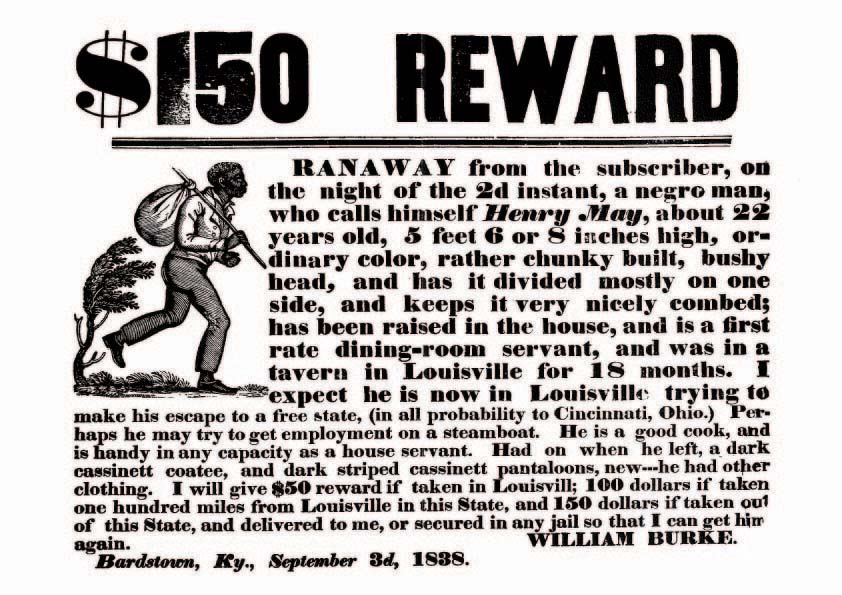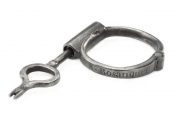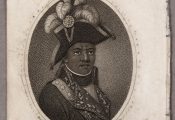This is an American poster advertising a substantial reward for a runaway slave Henry May, in Louisville, Kentucky, 1838. The enslaved were seen as valuable commodities and the high rewards offered for their return illustrate this. Some slaves persistently tried to escape, despite the punishments inflicted on captured runaways. They were held in public cages on the streets for all to see, waiting to be collected by their owners, when they would often receive 100-150 lashes, branding on the face or the loss of an ear. Until the late 1780s runaways could even have a limb amputated. Although the chances of freedom were slight, for some determined captives escape was preferable to enduring the relentless submission of slavery.
Many runaways were absent only for short periods of time, perhaps to visit friends and family on another plantation. Thomas Thistlewood recorded twenty runaways a year on his plantation in Jamaica, but only four of these stayed away for more than ten days. In practice it meant one in a hundred slaves were absent at any one time. More organized attempts at freedom, including by the Maroons in Jamaica and the Underground Railroad in the United States, brought many their freedom.
© Hull Museums
Accession reference: Hull Museums, 2006.3510



